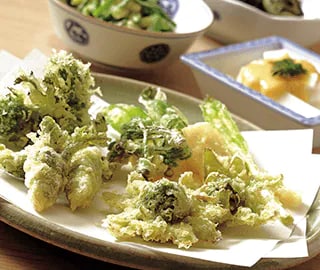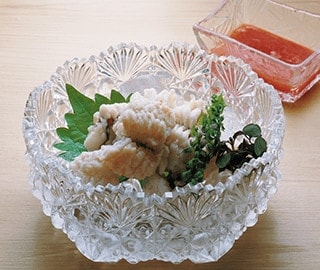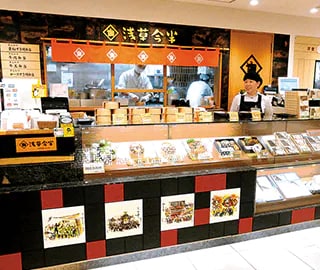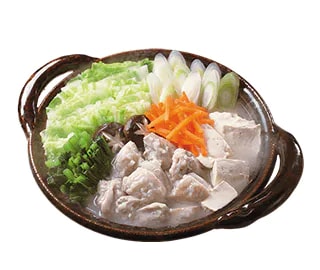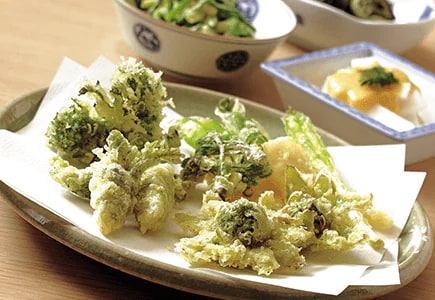
Japanese enjoy picking edible wild plants from early spring into summer every year, a practice known as sansai gathering. Sansai collectively refers to edible wild plants growing in fields and mountains.
Humans have gathered edible wild plants for centuries, some of which were later bred and improved for domestic cultivation. The Japanese, however, have always regarded such edible plants as part of nature’s bounty, and have a particular appreciation for the natural taste and fresh appearance of wild greens.
Sansai are part of nature’s bounty
During the seventh century, court nobles gathered edible wild field plants in the spring, a tradition referred to as “medicine hunting.” Sansai were indeed considered a medicinal food that was good for the health, and such plants supplemented the diet that was lacking during cold winter months. During the Edo era (1603-1867), sansai provided sustenance during times of famine, and thus it was natural that various ways of preparing sansai were devised through the centuries.
Typical spring sansai include tara-no-me (fatsia sprouts), seri (water dropwort) and kogomi (fiddle-head fern). Tara-no-me are leaf buds of a deciduous shrub and have an exquisite scent; they may be prepared as tempura, or boiled and eaten with dashi and soy sauce (ohitashi), as well as boiled and mixed with dressings or sauces (aemono). These sprouts contain considerable dietary fiber and support digestion.
Seri possesses a strong aroma, and its white stems have a crisp texture. It, too, is eaten as ohitashi or aemono. The carotene and vitamin C in seri supports the immune system and prevents colds. Kogomi may be enjoyed by simply boiling with a bit of salt, or prepared as tempura. Kogomi contains high levels of vitamin A, which is beneficial to the eyes and skin.
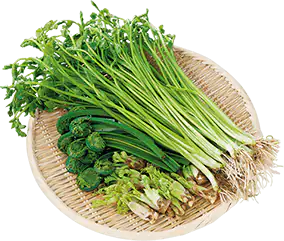
The annual variety and yield of Japan’s sansai varies from year to year. When seeking sansai, it is essential to gather only sansai in season that are ready to eat, to pick only as much as one can eat, and to take care not to uproot the plants. After shaking off any dirt from the gathered greens, they may be wrapped in newspaper to carry home, where they can be prepared and enjoyed. Recently, tours and inns have been targeting those who have never experienced the pleasures of gathering sansai: a local guide leads groups into fields and mountains to identify and pick plants; afterwards, they are prepared and eaten together.

